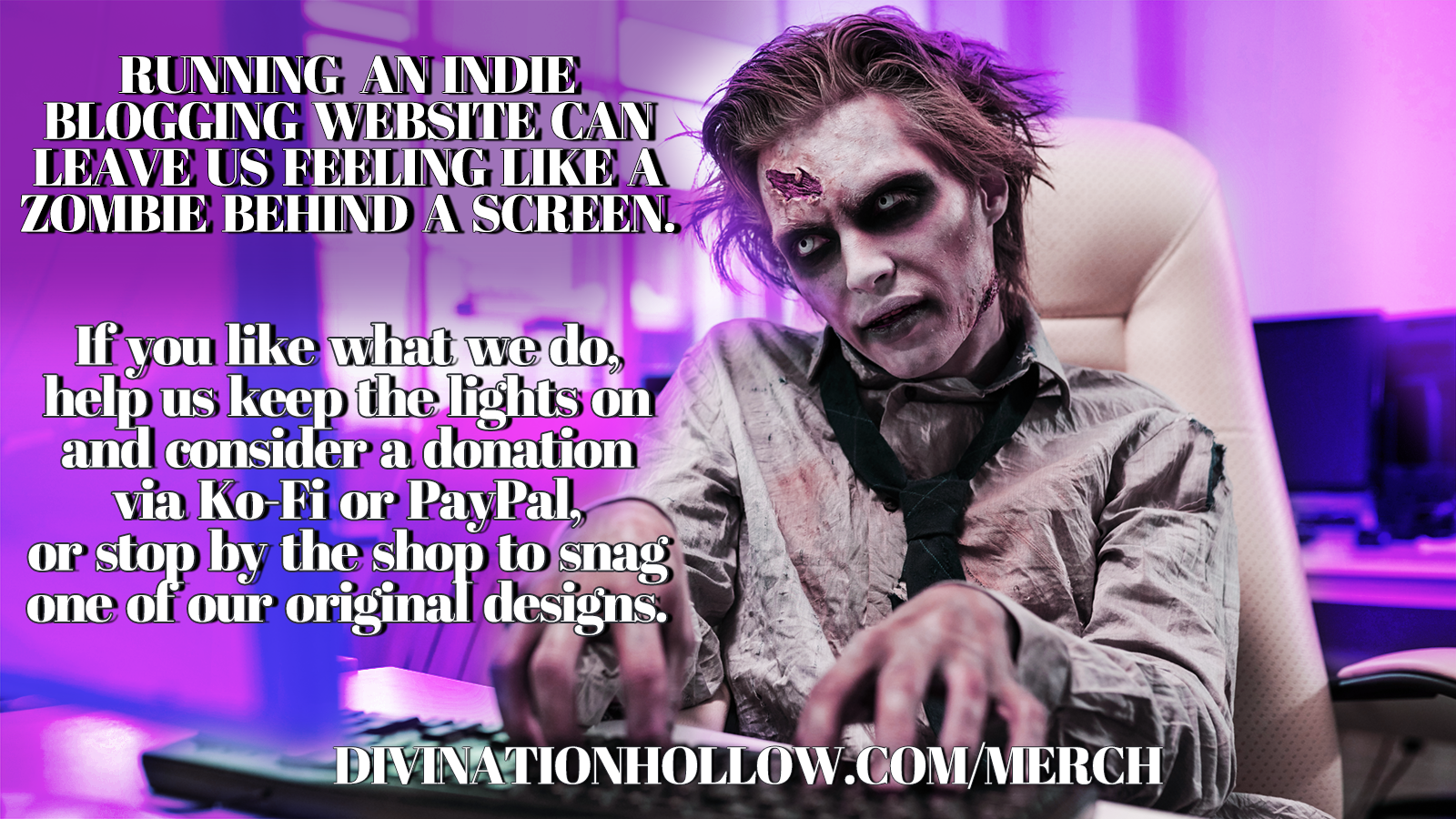The Horror Advocate — American Psycho: When Insecurity Is Violence
Welcome to our 2nd Annual Birthday Bash as Divination Hollow Reviews!
We’ll be celebrating all month long with a series of posts by our team and esteemed colleagues and this year’s theme is “Going to the Movies!” Join us as we share themed content with special “tickets” for each category inspired by cinema.
Celebrate with us!
AMERICAN PSYCHO: WHEN INSECURITY IS VIOLENCE
The Horror Advocate
In the 2000 film 'American Psycho’, director Mary Harron delivers the perfectly constructed yuppie specimen - Patrick Bateman. Bateman is played with unconstrained precision. He employs not only the madness but the disconnect, the sterility.
Patrick works on Wall Street in his father’s company Pierce and Pierce, though we never see him being productive. He doodles in his notebook, listens to music or watches television at his desk. He has the perfect job, the perfect body, and the perfect apartment. Upon our first glimpse into his luxurious condo, we’re bombarded with whiteness: white sheets, white walls, and white floors. All other surfaces are transparent. We’re thrown directly into his strict regiment, which consists of specialized body washes, facemasks, exfoliating scrubs, and intense physical activity. He intends to maintain perfection – his mask of sanity perfectly fixed. While you're initially weary of Patrick’s eccentric routine you slowly become teamed with him. His only identifiable emotions are "greed and disgust," making his raw composure a pseudo nightmare. You're made, very clearly, to feel Patrick’s discontent with the world around him.
However, underneath all of this Patrick Bateman is nothing short of insecure. When his fiancé asks him why he stays at a job he hates, he simply replies: ‘Because I want to fit in.’ He has a near meltdown after seeing his rival Paul Allen’s new business card. It’s better than his; it even has a watermark. Patrick retreats into a sweat, brutally pulsating under the surface. After this encounter, we witness his first on-screen kill; murder brought on by overwhelming anxiety.
After finding a homeless man on the street, Patrick calls him a “fucking loser”, stabs him numerous times, and even stomps his dog to death. This is the first time we see the real Patrick Bateman, the man underneath the mask. Up until that moment, it is pure myth. This kill was about opportunity, rage, and guilt. What Patrick thought he saw in the homeless man was really what he saw in himself. This is the first time he experiments with murder as an outlet for his internalized rage. He learns that killing can quell the lust, for a moment.
He kills many people throughout the film, but the kill he enjoys the most, and arguably the crescendo of murders for him, is that of Paul Allen. The murder of Paul Allen puts your brain in an esthetic chokehold by creating a scene that is both arresting and insatiable. You want more, but it’s difficult to watch him come apart. It is a brazen ax murder, typically seen in the dark, but committed in full light. After bringing Paul into his home and changing into a clear raincoat so as not to ruin his suit, he begins to espouse on the genius of Huey Lewis and the News. This is an essential part of the "idea that is Patrick Bateman." He is a connoisseur of pop music, and whenever he starts to talk about music - you know he is going to kill.
The murder of Paul Allen is visceral — and devoid of trivialities. Ax murders, in film, tend to take place in complete isolation – campgrounds, haunted houses, abandon towns; but here we get all the wrath with the vanity and futility of an upper-class New York environment. This scene challenges the long-held notions that money, power, and civility make one impervious to barbarity. Director Mary Harron made a specific point to sterilize Patrick so that the audience cannot just consume him, but must identify with him. You’re as stark and (emotionally) naked as he is. This murder, which occurs only 20 minutes into the film, emblems a cathartic stain on Patrick. He is really and truly free from all constraint, conformity, and perfection. The mask of sanity has officially slipped.
After Paul Allen’s death, Patrick goes on a murderous rampage. He kills old friends, old girlfriends, strangers, the homeless, prostitutes, and enemies. He is unstoppable. It’s an unquenchable blood lust that incites him now. It’s obvious when he is trying to shoot a stray cat at the ATM, that Patrick has completely lost control. After committing another murder and a shootout with the local police, Patrick finds himself having a breakdown on the floor of a Wall Street office. Frantic, he calls his lawyer. He lays out a full confession totaling his number of kills anywhere between 20 and 40 people. However, the lawyer doesn’t believe his story and none of the bodies are where Patrick left them. The end of the film leaves you to wonder if it was all a figment of Patrick’s imagination. In his world, he is always in control, but in reality, he’s the guy whose name people forget, the guy who can’t get a reservation at the hottest restaurant in New York, the guy who tries so hard to fit in – but always stands out.
He is simply not there.
Guest Post By Ava M Fields, The Horror Advocate
@AHorrorAdvocate on Twitter




